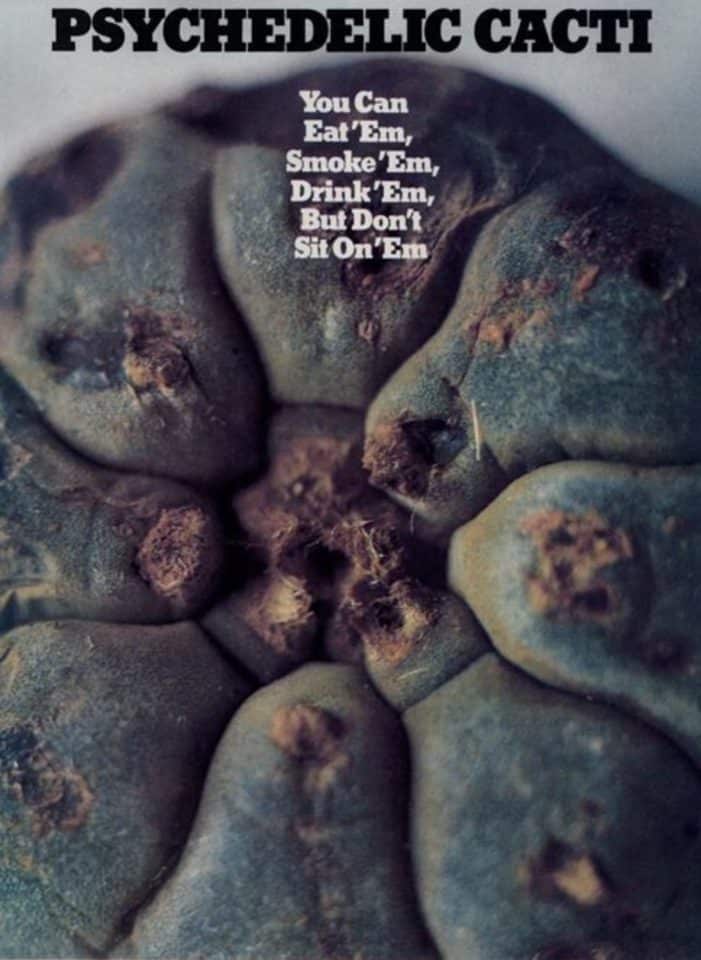Peyote/ Mel BrownFor this edition of Flashback Friday, we’ve got Robert Lemmo’s concise primer on the varieties of mind-altering succulents from the June, 1977 issue of High Times.
Which cacti will get you high? That depends on your definition of “high,” your metabolism, your culture and mind set and a thousand other factors. An Oto Indian peyotist told Weston La Barre, author of The Peyote Cult, in all sincerity, that peyote doesn’t work outside of prayer meetings—he had tried it.
Most knowledge of psychoactive cacti comes from Mexican and American Indians, especially the native shamans and curanderos (“healers”) who use the plants in religious and visionary contexts. Science has just not gotten on the stick in research into psychoactive cacti. Although use by Indians strongly suggests that many of the alkaloids found in cacti are hallucinogenic, only mescaline, macromerine and gigantine are officially recognized as such. Many alkaloids remain unidentified, and the vast majority of plants go unanalyzed.
Still, existing research, coupled with Indian knowledge of cactus use, enables us to identify about 50 species of cactus that will get you off, in one way or another. However, not every ritual hallucinogen used by Indians makes for a nice recreational high.
By far the best known and loved hallucinogenic cactus is peyote. This is often confused with mescal beans, mescal buttons and mescaline.
The mescal bean, or red bean, is the seed of a small shrubby evergreen, Sophora secundiflora, found in drier parts of the American Southwest and Mexico. The seeds are found in a beanlike pod and contain cytisine, a highly poisonous alkaloid of the nicotine group. Besides inducing visions, these seeds, called frijillitos in Mexico, commonly bring about nausea, convulsions and, if taken in large amounts, death from respiratory failure. Use of mescal beans goes back …
Read More
Author: High Times / High Times






